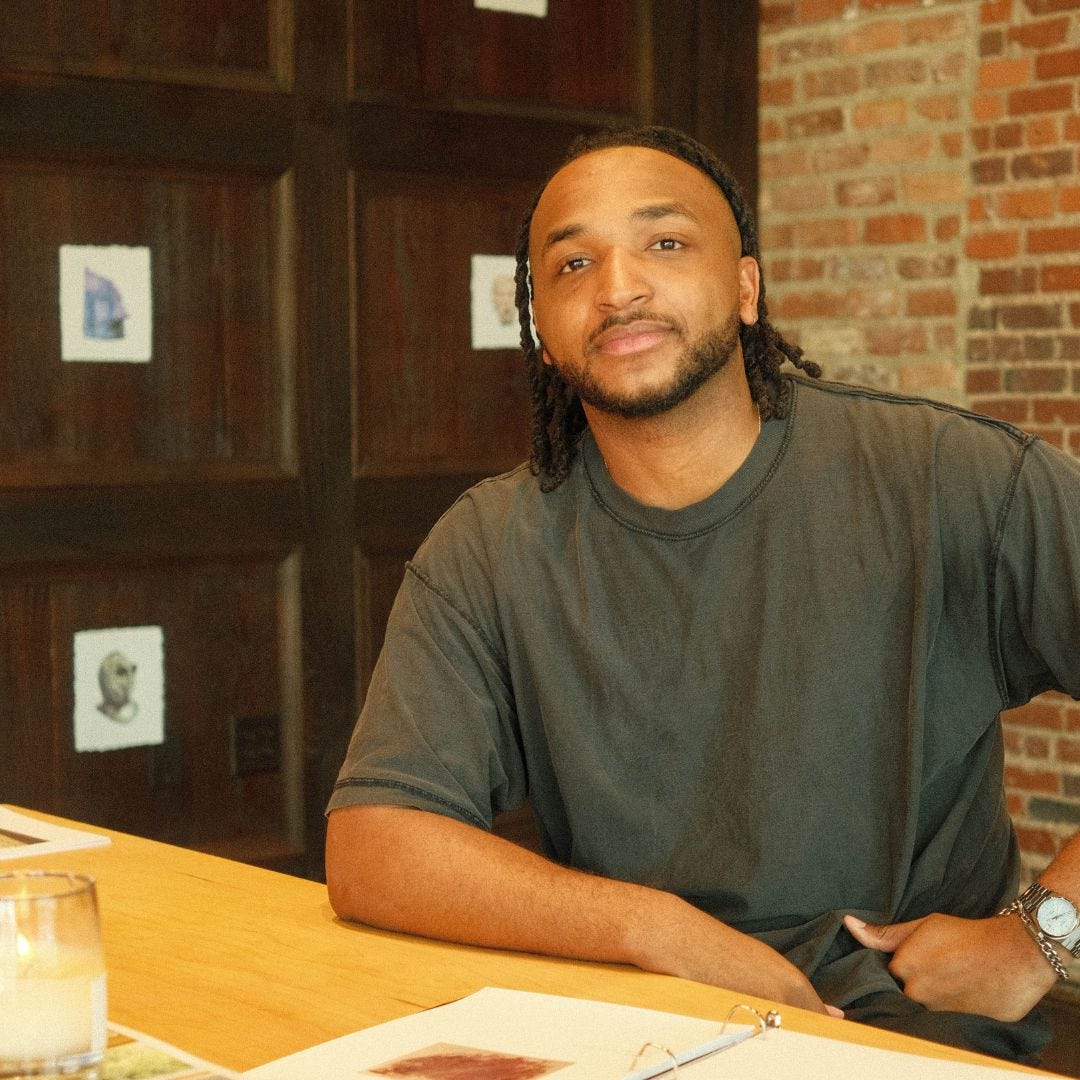The gallery world is often described in terms of access like who gets in, who gets left out, who decides. But fewer conversations focus on what happens inside that relationship: what a gallery is actually looking for, how decisions are made, and what it means to support an artist beyond just selling their work.
Talon Hawthorne, founder of Devinci House, operates from a different premise. For him, representation isn’t a transaction. It’s a long-term investment. And as you’ll see in this interview, his role isn’t just to show the work, it’s to frame it, protect it, and place it in the right hands for the right reasons.
This is what it sounds like when a gallerist sees artists not as inventory, but as partners in something bigger.
1. What makes you notice an artist’s work?
For me, noticing an artist’s work is often less about the artwork in isolation and more about the environment in which I encounter it. The setting acts as a kind of prologue — it shapes my perception and sets the tone for the narrative I begin to build around the piece and the artist behind it. I’m deeply influenced by context.
One of the things that always draws me in is contrast. For example, imagine a pristine, white-walled gallery with 40-foot ceilings — the kind of space designed to host monumental works. Now picture walking into that space and seeing a single, small-scale painting, just 8x8 inches. That tension would stop me. I’d immediately want to know who the artist is, why they chose that scale, what they're trying to say by going against the expectation of grandeur.
It's that intentionality, that thoughtful contrast, that compels me. It’s a reminder that noticing art isn’t one-size-fits-all; it’s an experience shaped by space, scale, and story.
2. How do you decide which artists to represent, what qualities matter beyond just talent?
Great question. For me as a gallerist, deciding to represent an artist is a deeply personal endeavor. In doing so, I’m saying yes to helping nurture their career through sales, visibility, and a platform that supports their long-term growth.
Of course the work needs to align with our programming, but beyond that, it’s about connection. Chemistry with the artist matters deeply. I need to trust them, and they need to trust me. Honesty, humility, and bravery go further than technical skill alone. Talent is just one part of what makes someone ready for representation. The relationship is what makes it sustainable.
3. What role does storytelling play in how you present art to collectors?
A few years ago, I heard a quote that stuck with me: “Whoever tells the best story wins.” I’ve carried that into everything we do at Devinci House.
Every true collector falls in love with the story, the journey behind the artist, the idea behind the work. When that story resonates, the decision to collect becomes inevitable. My role is to tell that story in a way that’s compelling and honorable — to create something deeper than just a transaction. When the story is right, collecting becomes an act of alignment.
4. Have you ever taken a chance on an artist others overlooked? If so, what made you believe in them?
Absolutely. What made me believe in them was being able to see beyond the moment — to see their future potential. Most artists don’t start out as “the best.”
But if you have the eyes to see it, there are always signs of greatness. Our job is to help create the conditions for that greatness to emerge — especially for artists who’ve been overlooked for reasons that have nothing to do with talent.
Representation, to me, includes advocacy. And advocacy starts with belief.
5. What do you wish more emerging artists understood about the business of showing and selling art?
That they are a business, too. Every artist should have some understanding of how the gallery world works. Not necessarily to become an expert, but to protect themselves and operate with more agency.
You don’t need to know everything. But you should understand how to price your work, how to read a contract, how to talk about your practice professionally. That kind of awareness doesn’t just help the artist — it helps the gallery, too.
Talon’s view of the gallery isn’t about gatekeeping. His answers reflect a kind of stewardship that’s rare in an industry often focused on urgency and scale. For artists looking to build real partnerships, and for collectors seeking deeper alignment, this is what trust looks like: someone who doesn’t just place the work, but holds the vision with you.
You can follow Talon’s gallery work at @devincihouse.





Thank you for letting me be a part of this, and all you do for the art world.